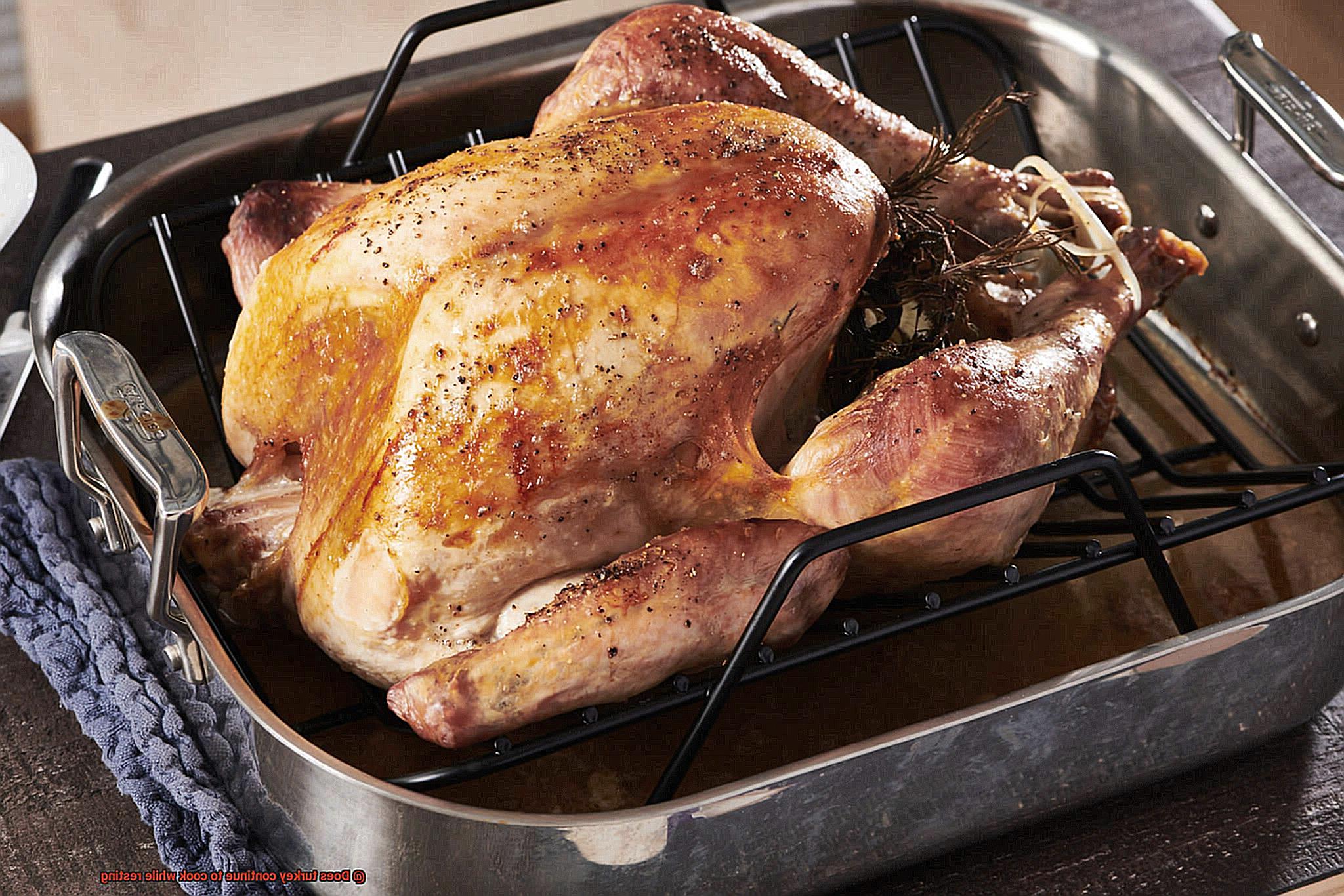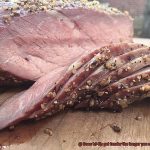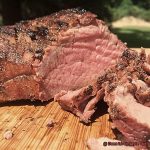Are you gearing up to host a festive feast for your loved ones this holiday season? If the answer is yes, then you must be planning on serving a turkey as the centerpiece of your meal. But, have you ever wondered if turkey continues to cook while resting?
Well, the good news is that it does. Once you take your bird out of the oven, it will continue to cook through a process called “carryover cooking.” But what does this mean for your culinary creation and how can you ensure that it doesn’t end up overcooked?
In this blog post, we’ll dive into the science behind carryover cooking and how it impacts your turkey’s texture and flavor. We’ll also reveal some simple tricks to prevent your bird from getting too dry or overcooked while resting. Plus, we’ll discuss how long you should let your turkey rest before carving and why it’s an essential step in achieving a perfectly cooked masterpiece.
So, if you want to impress your guests with a succulent and juicy turkey this holiday season, keep reading to discover the secrets of carryover cooking.
Contents
What is Residual Heat?
When you remove your food from the heat source, it’s not done cooking just yet. That’s because of residual heat – the heat that remains in the food even after cooking. This is especially important to keep in mind when cooking a turkey, as the amount of residual heat can affect the final outcome of your dish.
Several factors can impact the amount of residual heat in your turkey, including oven temperature, turkey size and shape, and the type of cooking vessel used. To ensure that your turkey is cooked thoroughly, it’s recommended to remove it from the oven when its internal temperature reaches around 165°F (73.9°C) in the thickest part of the meat.
But don’t be fooled into thinking that your turkey is done just yet. Even after removal from the oven, residual heat will continue to cook it for a certain period of time. That’s why it’s crucial to let your turkey rest for at least 20-30 minutes before carving.
Tenting your turkey loosely with aluminum foil during this resting period helps manage residual heat by allowing it to dissipate evenly throughout the meat. This will prevent overcooking and ensure that your turkey remains juicy and flavorful.
Taking this step also allows any juices that have been forced to the center of the turkey during cooking to redistribute throughout the meat. This results in a more enticing dish that will leave everyone begging for seconds.
Does Turkey Continue to Cook While Resting?
It’s a hotly debated topic among chefs and home cooks alike. But the truth is, yes, a turkey does continue to cook while resting.
Resting is a crucial part of the cooking process that allows the juices to redistribute throughout the meat, resulting in a succulent and flavorful bird. But many people worry that their turkey will become overcooked and dry during this time. So how long does it continue to cook?
Well, that depends on the size of your turkey and how long it was cooked for. Generally, a turkey can continue to cook for up to 30 minutes after it’s taken out of the oven. But don’t let that discourage you from allowing your bird to rest. With proper planning, you can factor in the extra cooking time when determining how long to cook your turkey in the oven.
It’s also essential to monitor your turkey’s internal temperature to ensure it reaches the desired level of doneness before removing it from the oven. A meat thermometer is a useful tool for checking the temperature of the thickest part of the bird, which should be 165°F (75°C) for safe consumption.
In summary, allowing your turkey to rest is still an essential step in creating a delicious and juicy bird. While it continues to cook during this time, proper planning and monitoring of its internal temperature will ensure it’s perfectly cooked and rested every time.
The Science Behind the Process
Cooking turkey is a delicate process, and one of the most important steps is allowing the meat to rest. As we cook a turkey, heat causes the muscle fibers to contract and expel moisture, resulting in a dry final product if not rested. However, by letting the meat rest after cooking, we give those fibers a chance to relax and reabsorb some of that lost moisture, resulting in a more flavorful and tender dish.
But what happens during this resting period? Will the turkey continue to cook? The answer is yes and no. While the turkey won’t continue cooking at the same temperature it was at when it was removed from the heat source, there is still residual heat within the meat that can cause it to continue cooking for a short period of time. This residual heat is a result of the energy that was absorbed by the meat during the cooking process.
The amount of residual heat within the meat depends on various factors, such as size and cooking method. For example, if you roast your turkey in an oven at a high temperature, there will likely be more residual heat within the meat than if you cooked it at a lower temperature. It’s important to note that allowing your turkey to rest for too long can result in overcooking, especially in thinner parts of the meat. So, it’s recommended to let your turkey rest for about 15-30 minutes depending on its size.
It’s crucial to monitor the internal temperature of your turkey before and after resting to ensure it has reached a safe temperature (165°F for poultry) and hasn’t been overcooked. Resting your turkey is an essential step in ensuring a delicious and tender final product.
To summarize: Resting your turkey allows muscle fibers to relax and reabsorb lost moisture, resulting in a more succulent and flavorful dish. While there is some residual heat within the meat during its resting period, it won’t continue cooking at the same temperature as before. It’s important to monitor the internal temperature of your turkey and not let it rest for too long to avoid overcooking.
Why Is Resting Important?
Then make sure you know why resting is crucial. Resting is the process of allowing your cooked meat to sit for a few minutes before cutting it, and it’s a critical step in cooking any type of meat, including turkey.
So, why is resting so important? Well, when you remove your turkey from the oven or grill, it’s still cooking due to residual heat. If you cut into it right away, all of the juices will spill out, leaving you with dry, tough meat. But if you allow your turkey to rest for 15-20 minutes after cooking, the internal temperature will even out, ensuring that it’s cooked evenly throughout.
But that’s not all – resting also allows those delicious juices to redistribute throughout the meat. As your turkey cooks, the juices are forced towards the center of the bird due to heat and pressure. Resting gives those juices time to move back outwards, resulting in a more flavorful and juicy turkey that will have your guests raving.
Resting also gives you time to prepare other dishes or sides for your meal while your turkey finishes cooking. And when it’s time to carve the bird, resting ensures that it’s not too hot to handle.
How Long Should You Let Your Turkey Rest?
As the holiday season approaches, many home cooks will be taking on the challenge of roasting a turkey. But did you know that letting your turkey rest is just as important as cooking it to the right temperature? Resting allows the juices to redistribute throughout the meat, resulting in a juicier and more flavorful bird. So, how long should you let your turkey rest before carving into it?
The standard rule of thumb is to let your turkey rest for at least 15-20 minutes before carving. This gives the meat time to relax and for the juices to settle back into the meat. For larger turkeys, the resting time may need to be extended up to 30-40 minutes. But why is this extra time so important?
While your turkey is resting, it will continue to cook due to residual heat. In other words, if you take your turkey out of the oven when it’s perfectly cooked, it will actually be overcooked by the time you carve into it if you don’t let it rest. To avoid this, plan ahead and remove your turkey from the oven a few degrees below your desired temperature.
To ensure that your turkey is perfectly cooked, use a meat thermometer. Insert it into the thickest part of the thigh, making sure not to touch bone. The turkey is ready when it reaches an internal temperature of 165°F.
But remember, letting your turkey rest isn’t just about achieving the perfect texture and flavor. It also allows you time to finish up other dishes or enjoy some quality time with family and friends before the meal. So, take a deep breath, relax, and let your turkey rest for a little while.
In summary, here are some key takeaways:
- Letting your turkey rest is crucial for a juicy and flavorful bird.
- Aim to let it rest for at least 15-20 minutes (or longer for larger turkeys) before carving.
- Plan ahead and remove your turkey from the oven a few degrees below your desired temperature.
- Use a meat thermometer to ensure that it’s fully cooked before resting and carving.
Tips for Perfectly Roasted Turkeys
Roasting a turkey to perfection is not just about the cooking time, but also about allowing it to rest after it has been removed from the oven. Here are five compelling reasons why letting your turkey rest is crucial for achieving a delicious and juicy bird.
Prevent Overcooking
When you take the turkey out of the oven, the internal temperature will continue to rise due to residual heat. If you let it cook until its target temperature is reached, it will overcook during resting. By removing it from the oven a few degrees below its target temperature, you can prevent this from happening.
Evenly Distributed Heat
Resting allows the residual heat in the turkey to distribute evenly throughout the meat, ensuring that it’s cooked all the way through. This even distribution of heat results in a more tender and flavorful turkey.
Juicier Meat
Resting allows any juices that have been forced to the center of the turkey during cooking to redistribute throughout the meat, resulting in a juicier and more flavorful bird. This redistribution of juices also helps to prevent dryness.
Easier Carving
Resting allows the meat to firm up slightly, making it easier to carve without shredding or falling apart. This means that you can present your guests with perfect slices of turkey instead of a mess of shredded meat.
Time for Gravy
Resting also gives you time to make gravy from the drippings while the turkey is resting, ensuring a delicious accompaniment to your meal. The extra time also allows you to finish up any other last-minute preparations before serving.
Benefits of Letting Your Turkey Rest
Look no further than the crucial final step in cooking – letting your turkey rest. As an expert on this topic, I can confidently say that allowing your turkey to rest is essential to achieving a perfectly cooked bird.
Let’s explore the many benefits of letting your turkey rest. Firstly, after cooking, the internal temperature of the turkey rises significantly, which means carryover cooking will occur. By letting it rest for at least 15-20 minutes, you’re allowing those juices to settle down and redistribute throughout the meat. This process evens out the temperature inside the bird, making it easier to carve and ensuring every bite is succulent and flavorful.
Additionally, letting your turkey rest helps retain its moisture and prevents it from drying out. Nobody wants a dry turkey on their Thanksgiving table, and by giving it ample resting time, you’re ensuring that your bird remains tender and juicy in every bite. Plus, by preventing overcooking, you’ll avoid any disappointment when it’s time to serve.
Furthermore, letting your turkey rest gives you valuable time for last-minute preparations. While your turkey is resting, you can make gravy, set the table, or finish up any side dishes. This way, when it’s time to serve, everything is ready, and your turkey is at the perfect temperature.

Common Mistakes to Avoid When Cooking a Turkey
Cooking a turkey can seem daunting, but with the right techniques and patience, anyone can master this holiday classic. However, there are several common mistakes to avoid when cooking a turkey that can make the difference between a succulent masterpiece and a dry, overcooked disaster.
Firstly, remember that turkey continues to cook even after it’s removed from the oven. Leaving it in for too long can result in an overcooked bird. To avoid this mistake, remove your turkey from the oven when it reaches an internal temperature of 160°F. The temperature will continue to rise as it rests, reaching a safe temperature of 165°F.
In addition, resting your turkey is crucial. Resting allows the juices to redistribute throughout the meat, resulting in a more tender and juicy bird. A common mistake is not allowing enough time for the turkey to rest. Be sure to give your turkey at least 20-30 minutes before carving.
To prevent your turkey from becoming overcooked while resting, properly tent it with foil. This will help retain heat and moisture, preventing the turkey from drying out while it rests.
Here’s a quick list of common mistakes to avoid when cooking a turkey:
- Leaving the turkey in the oven for too long.
- Not allowing enough time for the turkey to rest.
- Failing to tent the turkey with foil while it rests.
However, these aren’t the only pitfalls to avoid when cooking a turkey. Here are some other mistakes to keep in mind:
- Not thawing the turkey enough before roasting.
- Stuffing the bird with stuffing that’s too wet or dense.
- Cooking at too high or low of a temperature.
- Not seasoning the bird enough.
- Carving the bird too soon, which can cause it to lose moisture.
Conclusion
In summary, the key to a mouth-watering turkey is allowing it to rest after cooking. This is because the residual heat within the meat continues to cook it for some time, making it essential to remove it from the oven when its internal temperature reaches about 165°F (73.9°C) in the thickest part of the bird. By letting your turkey rest, you allow the juices to redistribute throughout the meat, resulting in a more tender and flavorful dish.
However, there are several mistakes that can ruin your turkey if not avoided. These include leaving it in the oven for too long, not giving enough time for resting, failing to tent with foil while resting, not thawing sufficiently before roasting, stuffing with wet or dense stuffing, cooking at too high or low of a temperature, not seasoning enough and carving too soon.
But don’t worry. Understanding carryover cooking and residual heat and following some simple tricks like monitoring internal temperature and tenting with foil during resting period can help you achieve a show-stopping holiday feast that will have everyone asking for seconds.






